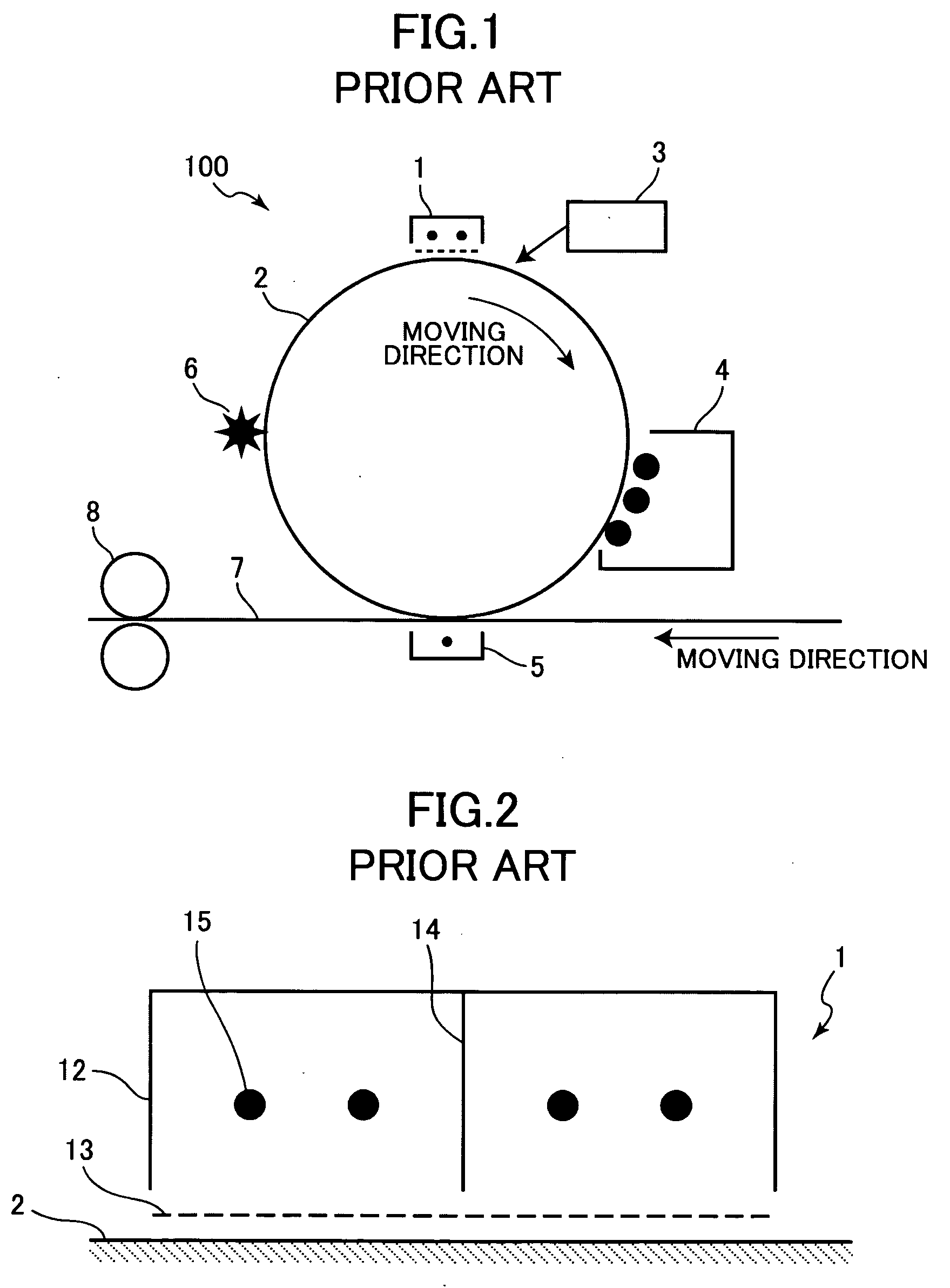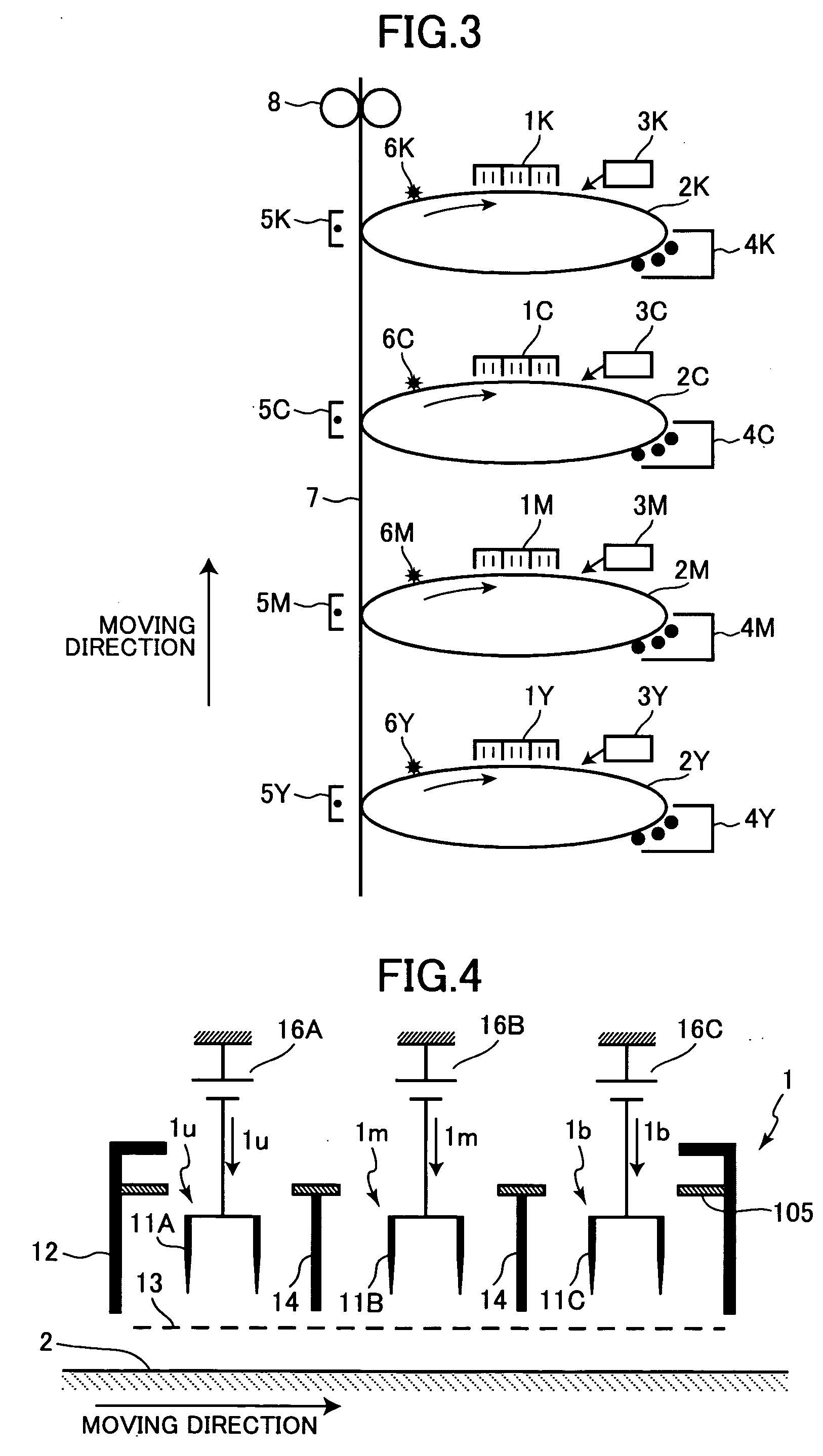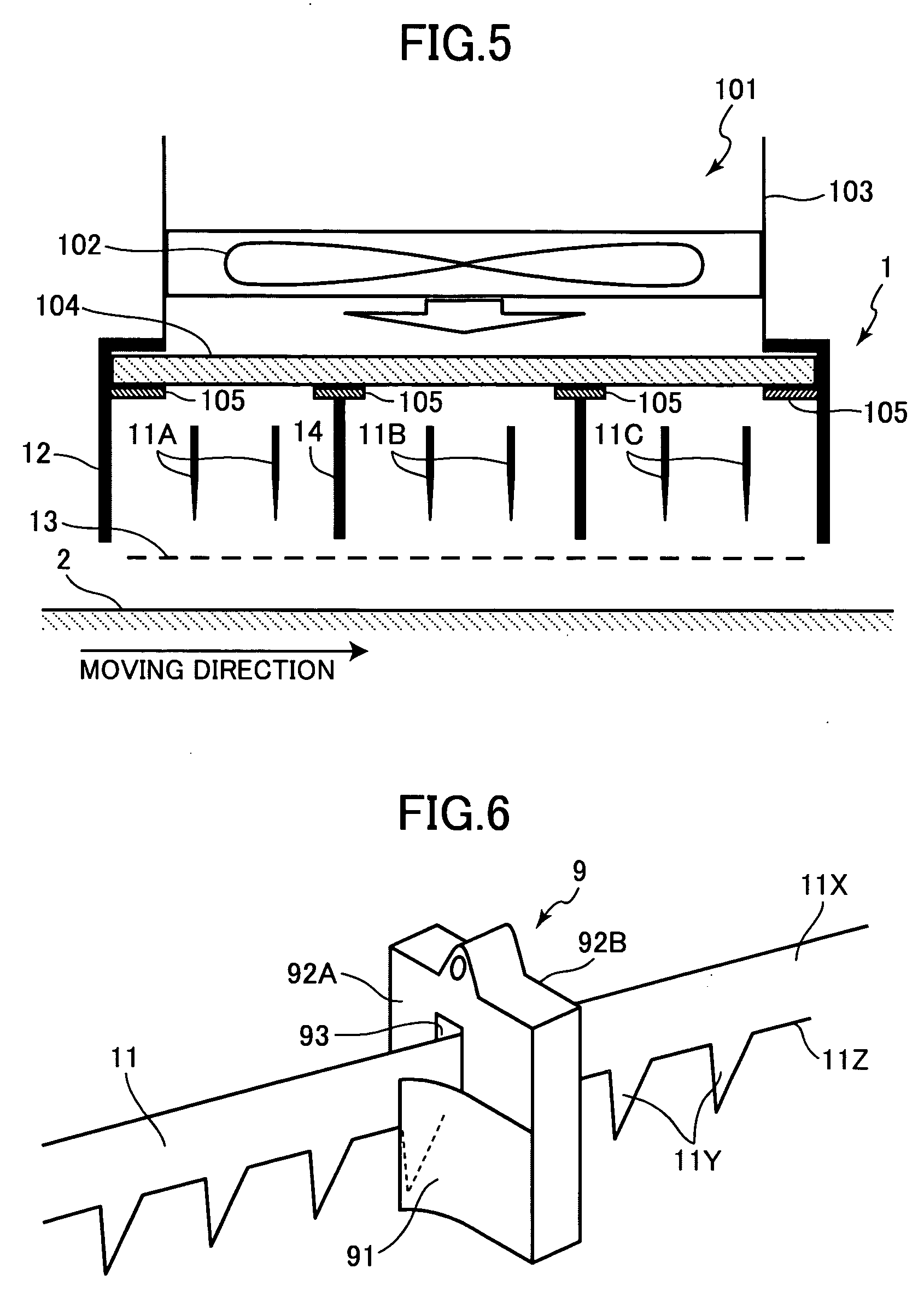Photoconductor charging device and image forming device using same
a charging device and photoconductor technology, applied in the field of electroctrophotographic image forming devices, can solve the problems of reducing the electrical characteristics of the photoconductor, affecting the living body, increasing the cost and production of larger noises, etc., and achieving the effect of reducing the adhesion of foreign materials to the electrode pla
- Summary
- Abstract
- Description
- Claims
- Application Information
AI Technical Summary
Benefits of technology
Problems solved by technology
Method used
Image
Examples
experiment 1
[0041] In order to provide a reference used as a basis for comparison, unitary current of 1.39 μA / mm is equally applied to the three pairs of the electrode plates 11A, 11B, and 11C which are set in the upstream side 1u, center portion 1m, and the downstream side 1b, respectively. As a result of experiment, generation of the black strips was recognized in the tip end portion of the saw-tooth electrode after about 35000 rotations of the photoconductor 2. Investigation of the black strips with an electronic microscope revealed that the materials forming the black strips are discolored foreign materials including dusts, toner, and paper dust as contained in the air. To generate corona discharges using the electrodes formed with the black stripes, a higher voltage needs to be applied to the electrodes than the normal voltage. Because, in the foreign material adhered condition, the corona discharges are unlikely to occur if the voltage applied to the electrode is maintained at the normal ...
experiment 2
[0042] Unitary current of 2.93 μA / mm is applied to the center electrode plates 11B and unitary current of 0.63 μA / mm is applied to each of the upstream-side and downstream-side electrode plates 11A and 11C. That is, the unitary current set to flow in the center electrode plates 1B is 4.7 times as much as the unitary current set to flow in the upstream-side and downstream-side electrode plates 1A and 1C. In this condition, adhesion of the foreign materials to the tip end portion of the saw-tooth electrode 11 was recognized after about 20000 rotations of the photoconductor 2. The corona discharge voltage was increased in due course and was proceeded to a spark discharge.
experiment 3
[0043] Unitary current Im for the electrode plates 11B disposed in the center portion was set to 1.3 to 3.0 times as much as unitary current Iu or Ib for the electrode plates 11A and 11C disposed in the upstream and downstream sides. Specifically, unitary current of 1.67 μA / mm was applied to the center electrode plates 11B and unitary current of 1.25 μA / mm was applied to the upstream-side and downstream-side electrode plates 11A and 11C. That is, the unitary current set to flow in the center electrode plates 1B is 1.3 times as much as the unitary current set to flow in the upstream-side and downstream-side electrode plates 1A and 1C. In this condition, adhesion of the foreign materials to the tip end portion of the saw-tooth electrodes 11 was not recognized until the photoconductor 2 was rotated about 40000 times.
PUM
 Login to View More
Login to View More Abstract
Description
Claims
Application Information
 Login to View More
Login to View More - R&D
- Intellectual Property
- Life Sciences
- Materials
- Tech Scout
- Unparalleled Data Quality
- Higher Quality Content
- 60% Fewer Hallucinations
Browse by: Latest US Patents, China's latest patents, Technical Efficacy Thesaurus, Application Domain, Technology Topic, Popular Technical Reports.
© 2025 PatSnap. All rights reserved.Legal|Privacy policy|Modern Slavery Act Transparency Statement|Sitemap|About US| Contact US: help@patsnap.com



